Beginnings of SDN Glebe
“To educate a young child, you need to be creative, resourceful, a good communicator,and a good listener. Our staff here at SDN Glebe have all of those traits”- Ginie Udy, SDN CEO, 4 May, 2010
SDN Children’s Services begins in 1905
In 1905 a determined group of women from Sydney’s upper classes who understood ‘the difficulties that beset the paths of working mothers’ founded the Sydney Day Nursery Association (now SDN Children’s Services). The Association aimed to improve the welfare of children whose mothers were facing poverty and had to work to provide for their family. Infant mortality was high and the Kindergarten Union was only able to provide day care services for a few hours a day. With no other option, these young children were often left to fend for themselves among the streets of working class Sydney.
In response, the Association opened its first Day Nursery in a terrace house in Dowling Street, Woolloomooloo in 1905, the first long day care centre in NSW. For just three pence a day, babies and children were bathed, fed, clothed and cared for from 7.00am to 6.30pm. Due to overwhelming demand, the Association opened Day Nurseries in other locations in the inner city soon after. These were all areas of need in Sydney with large working populations.
History of Glebe
The traditional owners of the land on which Glebe sits today are the Gadigal People of the Eora Nation. They watched the British First Fleet occupy Sydney Cove in 1788. A tract of land adjacent to Sydney Cove was measured out in 1790 and dubbed the Sydney Glebe lands.
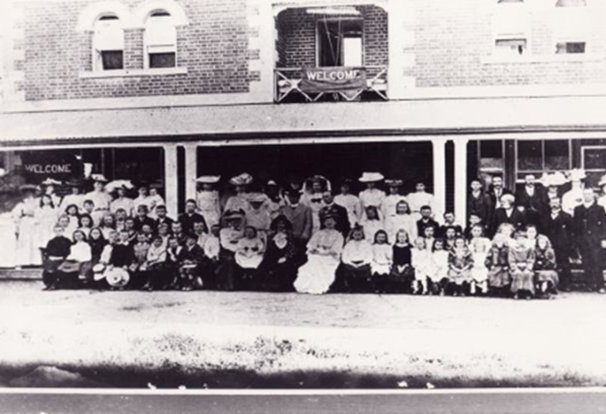
Above: Glebe Rectory, built in 1872. A large crowd of people in front of the building to welcome Rev A.M. Hopcraft. Courtesy Canberra Historical Society
The colony’s first governor, Arthur Phillip, allocated the Glebe area to the first chaplain, Richard Johnson, following instructions from the British authorities in London. Much of the area was used for crops until the need for housing saw the land subdivided by church authorities.
In 1828, when the area was staked out, more elevated allotments at Glebe Point attracted a wealthier class who built stately homes, some of which survive today around Glebe Point Road. For most of Glebe’s early history it was a two-tier community, with the ‘gentry’ living in fine style on Glebe Point while workers lived in modest to shabby conditions at The Glebe.
Like many areas of Sydney in the early 20th century, and especially after the Great Depression of the 1930s, Glebe became shabby and unfashionable as factories vacated the inner city. This changed when inner Sydney first attracted bohemians in the 1960s and then became gentrified from the late 20th century.Glebe has seen many significant events in Australian history, from the birth of the first Australian Prime Minister, Edmond Barton, in 1849 to feminist activists setting up Australia’s first women’s shelter in an abandoned terrace in the 1970s.
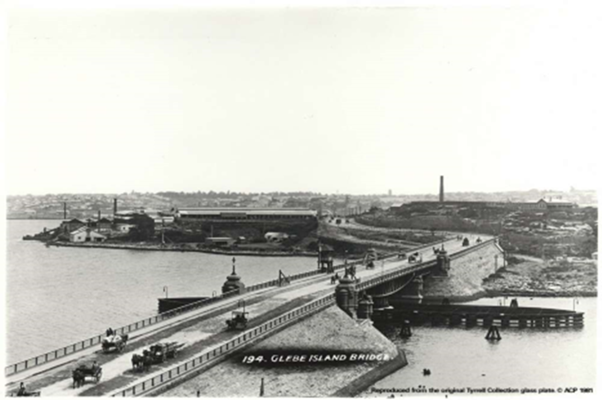
Above: Above: Glebe Island Bridge, 1880. Courtesy The Australian Consolidated Press
Toddlers Junction Centre
Before it was known as SDN Glebe, an early childhood care and education centre called Toddlers Junction Centre operated on the site. This was a much-loved community-based centre, but a variety of pressures eventually made it untenable for the centre to continue operating with its original management structure. It had been heavily reliant on parent volunteers, and with so much for them to do it became difficult to maintain the high standards that were expected ofa modern childcare centre.
Junction Parent Committee, Louise Haid, said on the handover to SDN on 4 May 2009. “The day of the Toddlers Junction handover to SDN is finally here after an 18-month process from conception to completion. The Parent Committee would like to thank you [SDN] for your team’s effort—particularly Kirsten Forrester and Michelle Lane. They have been professional and helpful during each step of the process.”
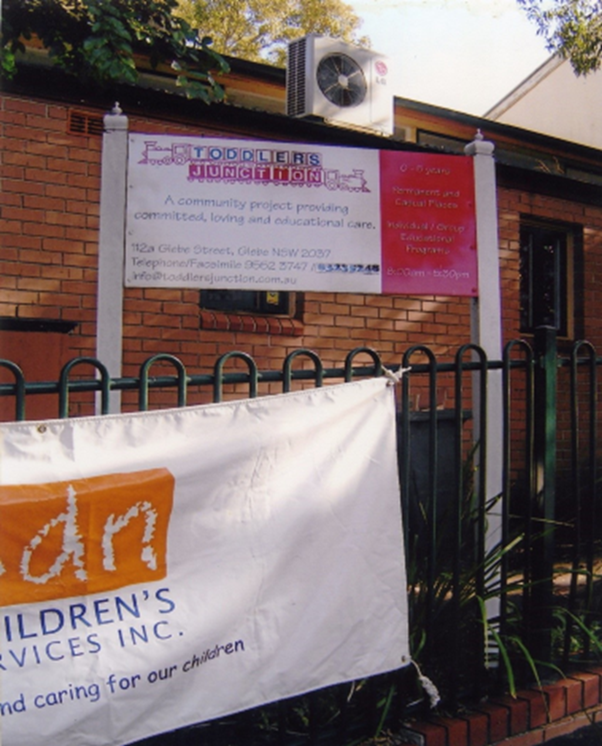
Above: Toddlers Junction/SDN Glebedual signage, May 8 2009
SDN Glebe
At SDN Glebe’s first birthday party on 4 May 2010, SDN CEO Ginie Udy welcomed NSW Minister of Education Verity Firth to the event. Firth was also the local NSW MP. As part of her speech Ms Udy said:
“It takes a special person to work in early childhood education and care. To care for a young child, you need to be nurturing, attentive, patient and supportive. To educate a young child, you need to be creative, resourceful, a good communicator and a good listener. Our staff here at SDN Glebe have all of these traits.
Today, SDN Glebe is a centre with home-like atmosphere, offering early childhood education and care for children from birth to school age. It is also an occasional care centre for the local community. Since its beginnings, the centre has maintained a strong connection with the families of this vibrant, multicultural community.
One of the ways that SDN Glebe has embraced diversity is by providing an Aboriginal play group for Indigenous children. Ngara Nanga Mai (pronounced ingara nanga my) is the philosophy underpinning SDN’s work with Indigenous families. The phrase, from the Gadigal language of the Eora (Sydney) Nation, means listen and dream.
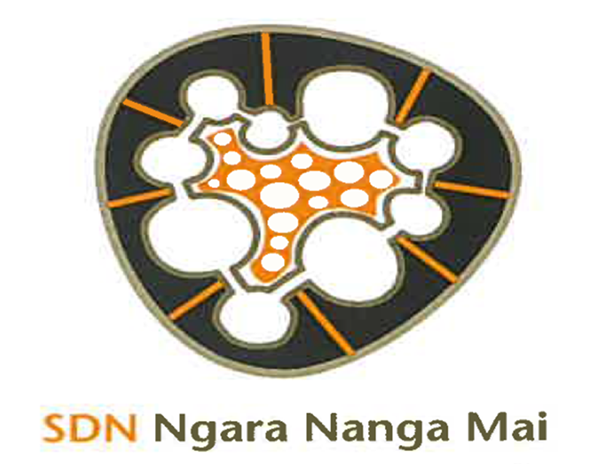
Above: The logo of SDN Ngara Nanga Mai Unit. Launched in 2011, Glebe’s Aboriginal Play Group partly informed its creation.
Acknowledgement to Country
"We sing a morning song and an Acknowledgement to Country, encouraging children to think about those who have come on this land before us and illustrating our commitment to respecting Indigenous Australian culture and people.”- from a SDN Glebe promotional booklet.
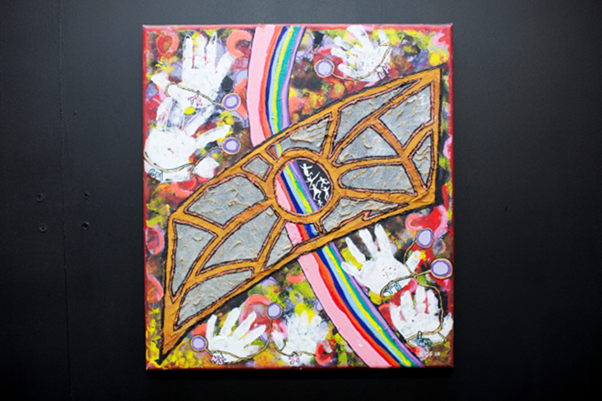
Above: Panel 4 of Aunty Kath’s CreationSnake symbolising Play Groups
Congratulations to SDN Glebe
At SDN Glebe’s first birthday celebration, Minister for Education and Training and local member Verity Firth, revealed that Glebe is at the heart of the biggest baby boom in NSW. Ms Firth also congratulated SDN for providing high-quality and much needed education and care for children in the area.

